The Economics and Statistics Division maintains archives of previous publications for accountability purposes, but makes no updates to keep these documents current with the latest data revisions from Statistics Canada. As a result, information in older documents may not be accurate. Please exercise caution when referring to older documents. For the latest information and historical data, please contact the individual listed to the right.
<--- Return to Archive
For additional information relating to this article, please contact:
May 21, 2024LABOUR PRODUCTIVITY AND HOURS WORKED, 2023 [PRELIMINARY] Statistics Canada has released preliminary labour productivity accounts for 2023.
The data are consistent with provincial and territorial real GDP by industry data for 2023 as well as the Survey of Employment, Payroll and Hours and the Labour Force Survey. Data reported below focus on business sector industries and do not include either government or non-profit institutions. For example, education refers only to private educational institutions and not government-funded schools.
Large employment losses in high contact service industries in 2020 distorted hours worked and productivity results for all provinces. Loss of employment hours in labour-intensive and lower productivity industries increased business sector average productivity in 2020. Employment recovered in these labour intensive industries over 2021-2023, lowering business sector labour productivity to near pre-pandemic levels.
Nova Scotia's business sector labour productivity fell by 2.0% in 2023, following declines of 4.6% in 2021 and 1.5% in 2022.
Hours worked in Nova Scotia's business sector increased by 3.0% while real value added grew at a slower pace at 0.8%. National productivity was down 2.2% with declines in all provinces. Newfoundland and Labrador reported the largest decline in labour productivity while British Columbia reported the least decline.
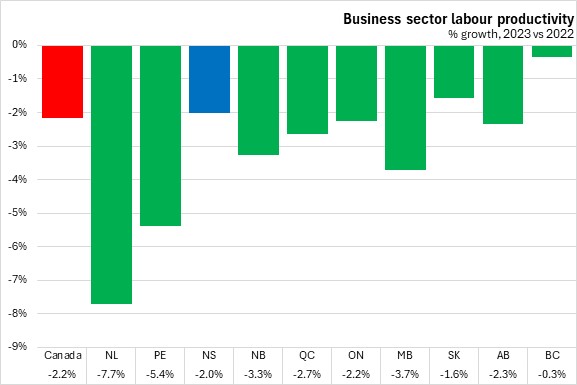
All provinces reported gains in business sector hours worked from 2022 to 2023. For all provinces except Newfoundland and Labrador and Québec, real value added from rising hours worked was offset by declining labour productivity. In Newfoundland and Labrador, declining productivity was stronger than rising work hours, contributing to a decline in business sector real value added. In Québec, rising hours worked were exactly offset by lower productivity leaving business sector real value added little changed from 2022 to 2023.
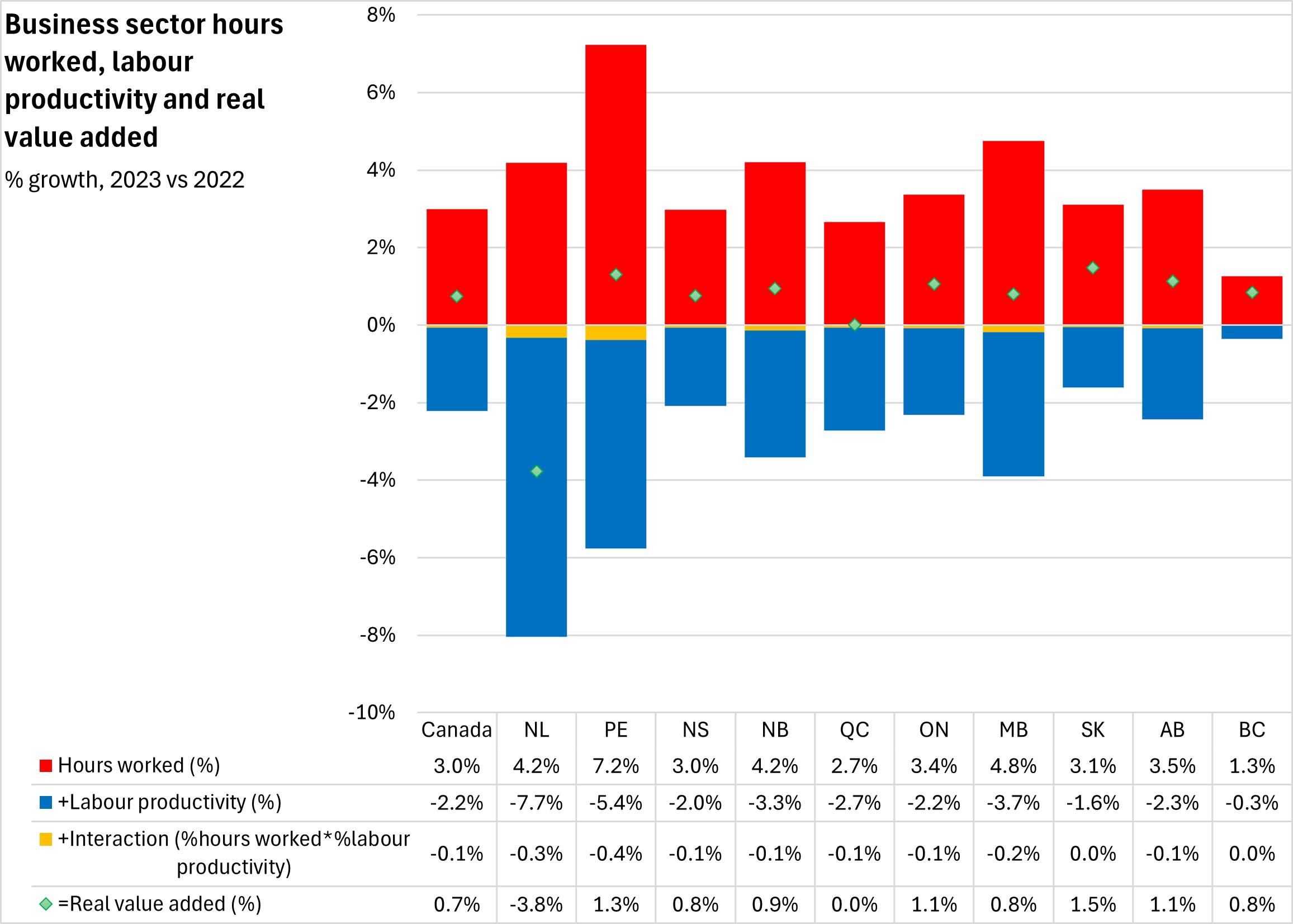
Labour productivity represents the amount of real value added generated per hour worked. Nova Scotia's business sector labour productivity was $43.7 in real value added per hour worked in 2023. National business sector labour productivity was $59.1 in real value added per hour worked. Labour productivity is considerably higher in resource-producing provinces (Newfoundland and Labrador, Saskatchewan, Alberta) as these industries generate large amounts of real value added with comparatively few hours worked. Labour productivity was lower in all three Maritime provinces, with Prince Edward Island reporting the lowest business sector labour productivity in 2023.
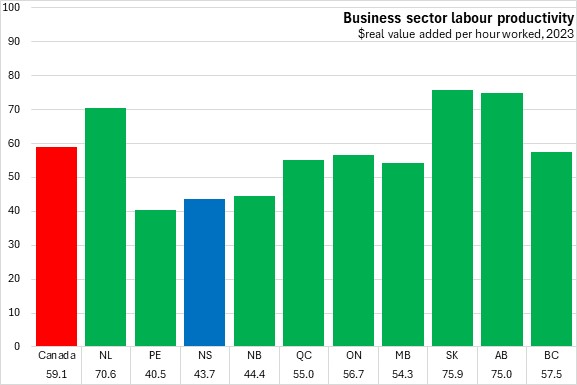
Labour productivity continued to revert to trend growth in 2023 after the pandemic-related distortions of 2020-2022. Compared with pre-pandemic levels from 2019, Nova Scotia's business sector labour productivity was 0.9% lower in 2023. Canadian business sector labour productivity was 0.2% higher in 2023 compared to 2019. All provinces except Québec, Saskatchewan and British Columbia reported lower productivity in 2023 than in 2019.

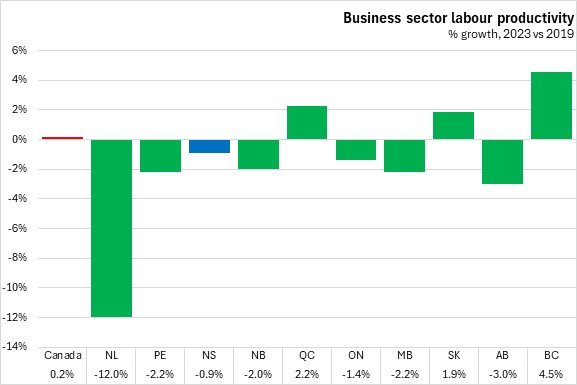
Business sector hours worked increased 3.0% in Nova Scotia in 2023 - the same as the gain registered nationally. All provinces reported higher hours worked with the fastest growth in Prince Edward Island. British Columbia reported the slowest gains in hours worked.
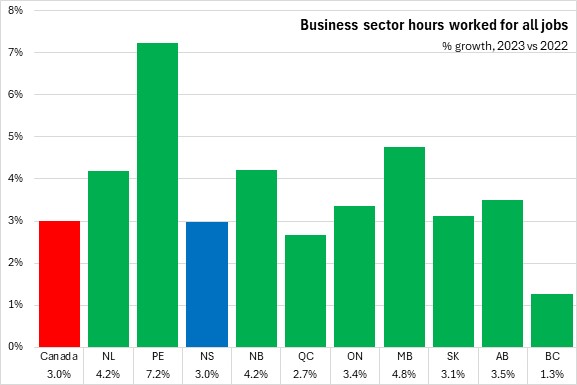
Compared with 2019, Nova Scotia's business sector hours worked were up 4.8% in 2023. Business sector hours worked have fully recovered to pre-pandemic levels in all provinces except Saskatchewan.
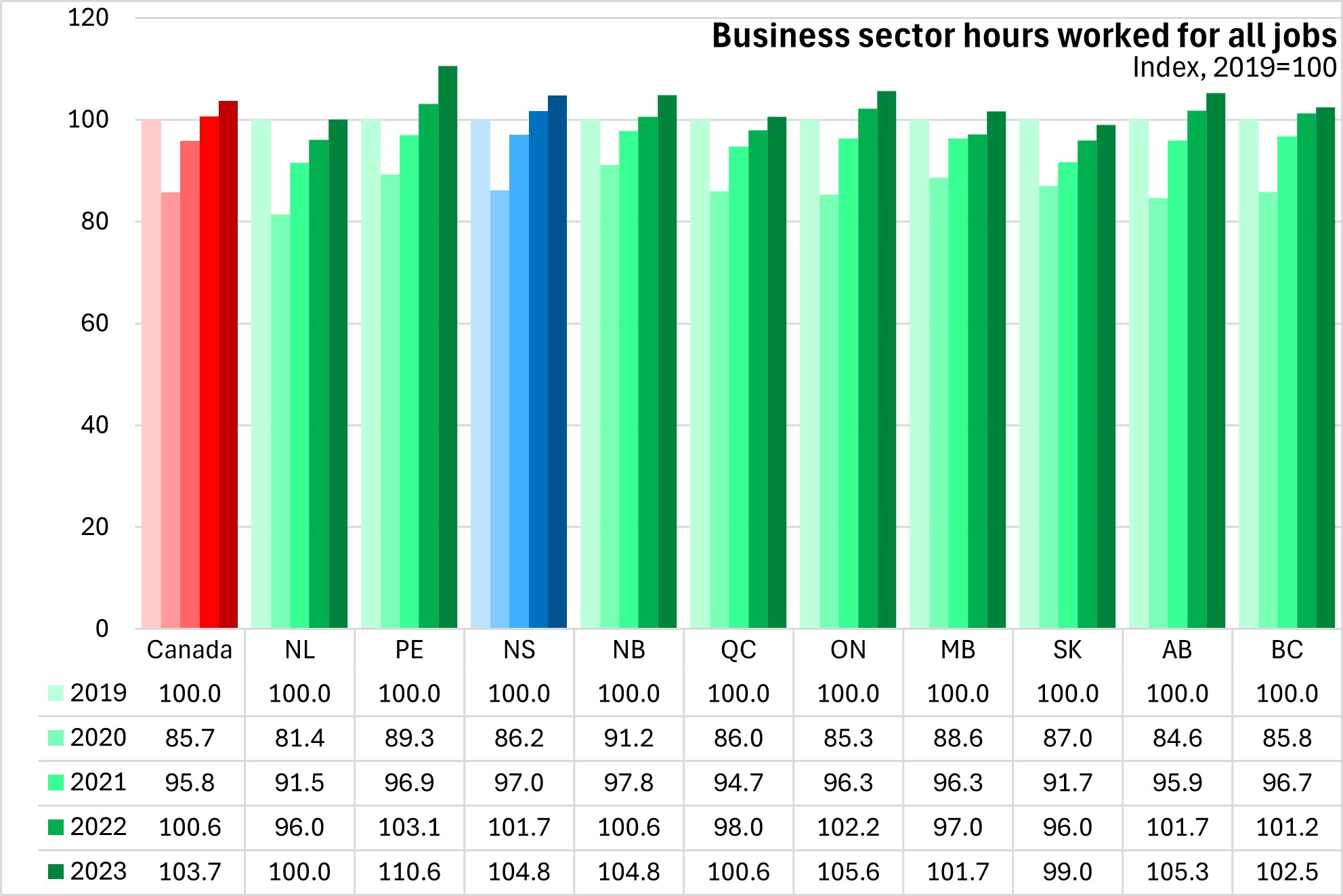
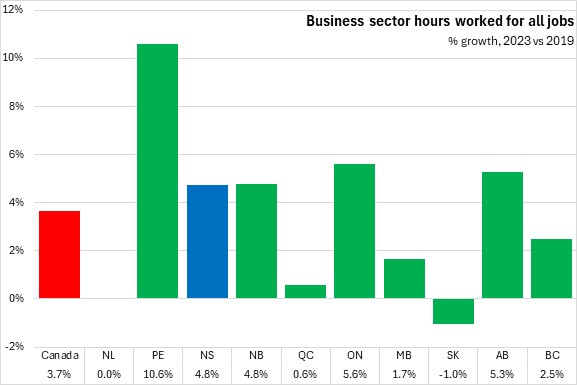
Nova Scotia's business sector real value added increased by 0.8% from 2022 to 2023 - about the same as the national pace of 0.7%. Saskatchewan had the largest growth in business sector real value added while Newfoundland and Labrador reported the only decline.
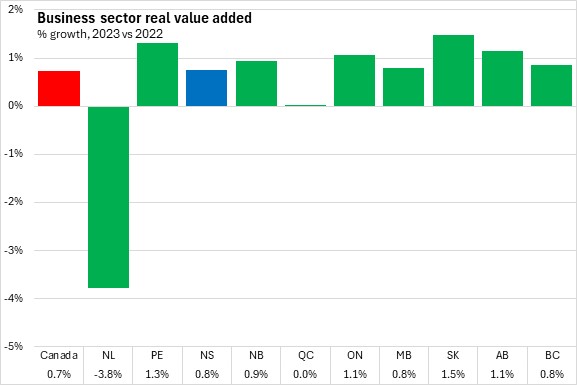
Compared with pre-pandemic levels from 2019, Nova Scotia's business sector real value added was 3.7% higher in 2023. Nationally, business sector real value added was 3.8% higher in 2023 than in 2019 with gains in 8 provinces. Prince Edward Island's real value added has grown the most compared to 2019. Newfoundland and Labrador and Manitoba were the only provinces for which business sector real value added was down in 2023 compared to 2019.
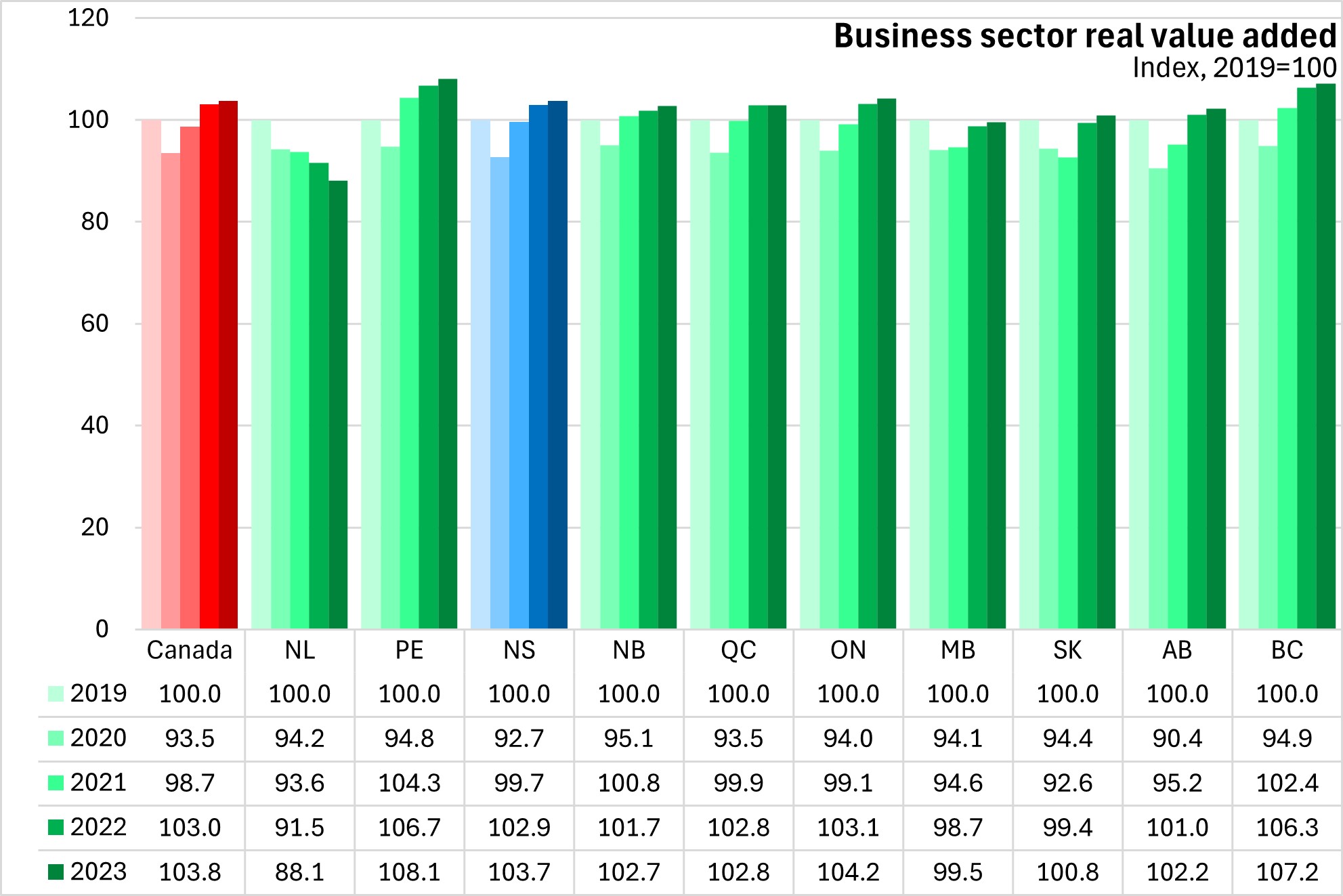
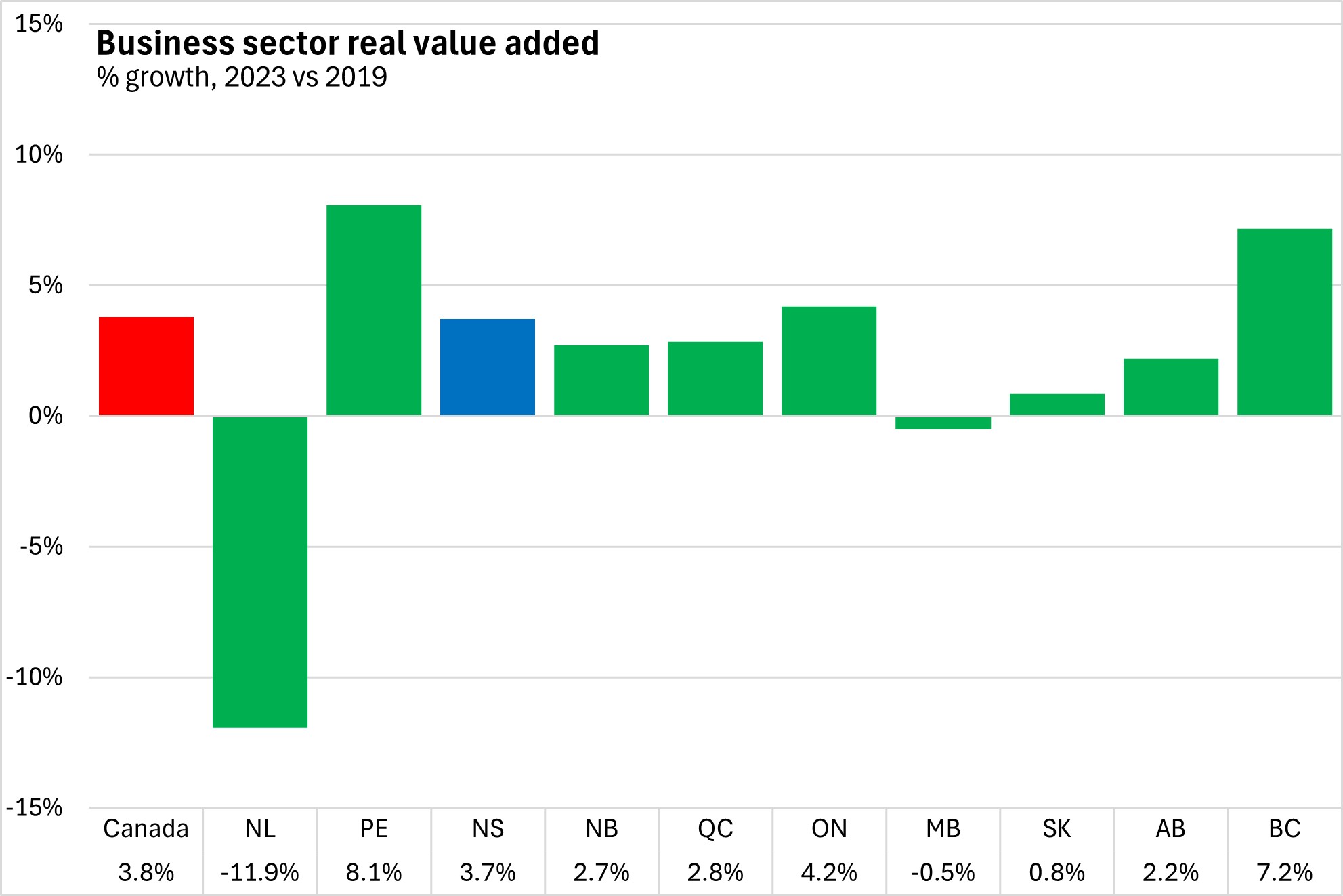
Business sector employee compensation per hour worked increased by 4.9% in Nova Scotia in 2023, which was the fastest among provinces (national: 3.1%). All provinces reported rising business sector employee compensation per hour worked with Manitoba reporting the slowest growth.
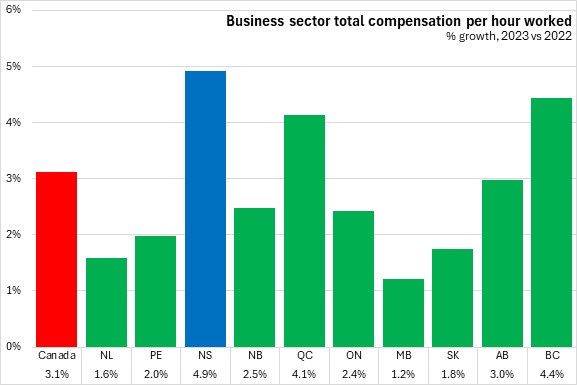
Nova Scotia's total employee compensation in the business sector was $35.84/hour worked in 2023. This was 82.6% of the national average ($43.38/hour). Employee compensation per hour worked was highest in Alberta and Ontario and lowest in Prince Edward Island.
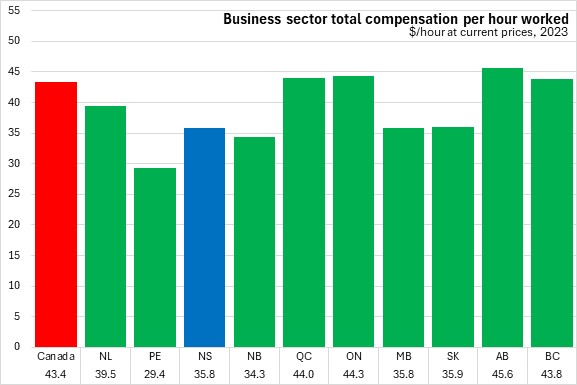
Nova Scotia's total compensation per hour worked increased by 27.1% from 2019 to 2023. Nationally, employee compensation per hour worked increased by 23.0% with gains in all provinces. Quebec reported the fastest gains in employee compensation per hour worked over this period while Alberta reported the slowest growth.
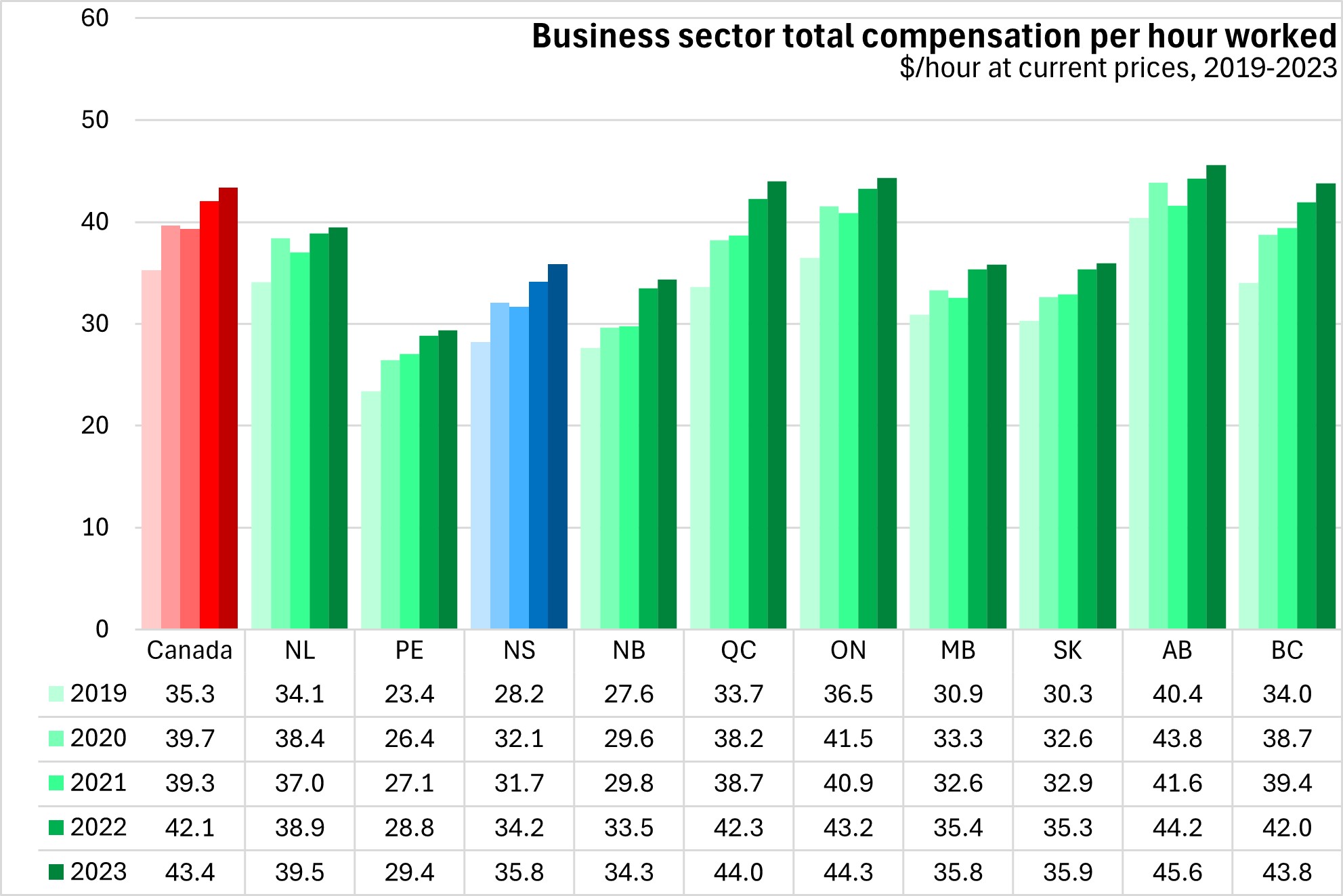
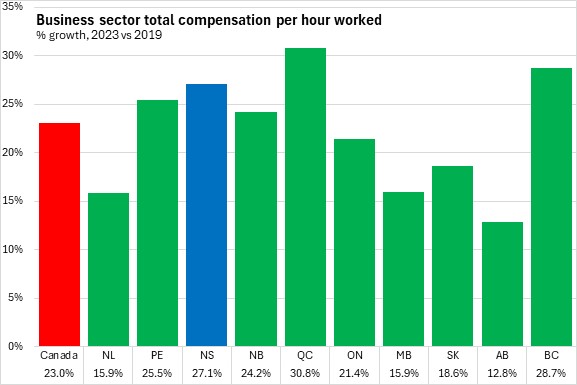
Unit labour costs represent the amount of labour compensation required to generate $1 in business sector real value added. Unit labour costs rise when employee compensation per hour rises. Unit labour costs fall when labour productivity improves.
In 2023, Nova Scotia's business sector unit labour costs increased by 7.3% - faster than the national pace of 5.5%. Unit labour costs were up in all provinces, led by Newfoundland and Labrador. Saskatchewan reported the slowest growth in unit labour costs.
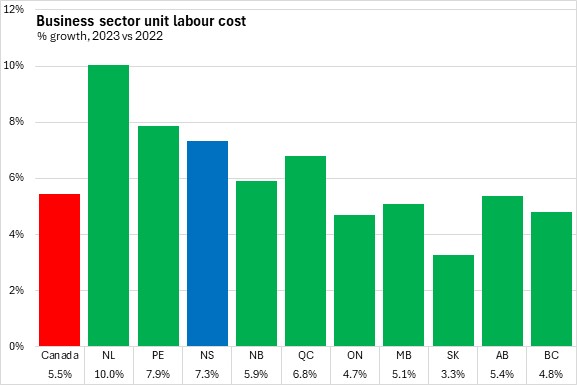
Nova Scotia's unit labour costs were $0.821 per $1 of real value added in 2023. This was the highest among provinces. Saskatchewan and Newfoundland and Labrador had the lowest unit labour costs.
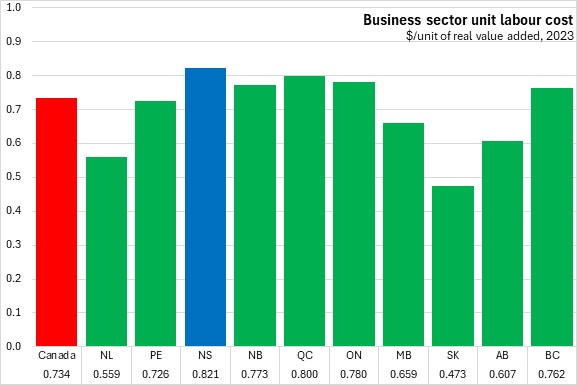
Nova Scotia's unit labour costs rose in each year from 2019 to 2023, rising by 28.5% over 2019 levels in 2023. National unit labour costs were up by 22.9% with the fastest gains in the Atlantic Provinces and Québec. Saskatchewan and Alberta reported the slowest increases in unit labour costs over this period.
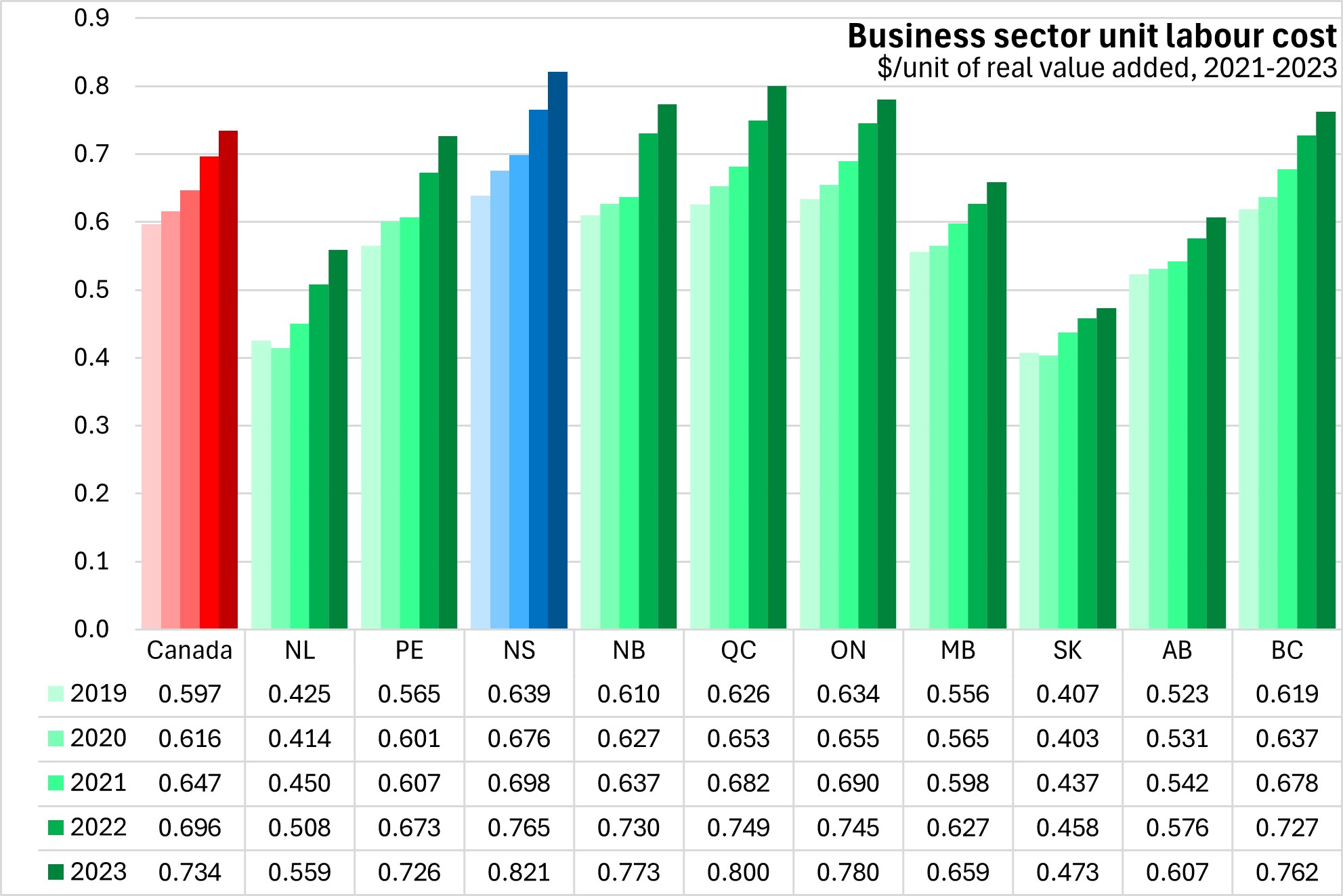
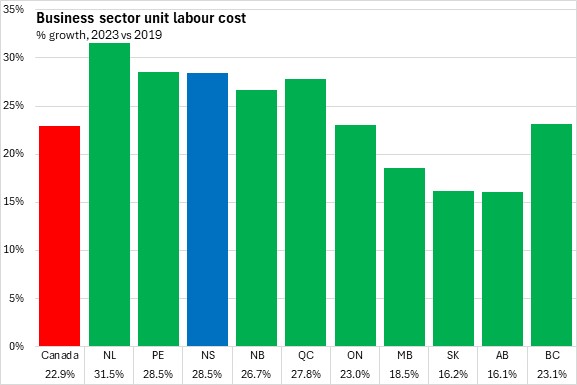
Nova Scotia's decline in business sector labour productivity in 2023 declined for both service industries (-1.6%) and goods industries (-3.3%). Nova Scotia's decline in service industry productivity was faster than the national pace, but the province's decline in goods industry productivity was slower than the national pace.
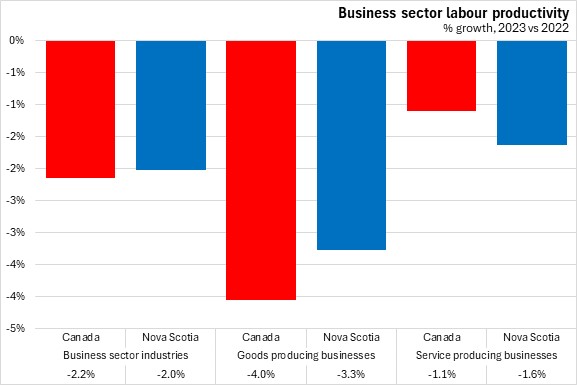
Compared with 2019, growth in Nova Scotia's labour productivity was due to growth in service producing industries. For Canada, labour productivity growth in service industries more than offset the decline in productivity from the country's goods producing industries. In Nova Scotia, rising service industry productivity was not sufficient to offset falling goods industry productivity from 2019 to 2023.
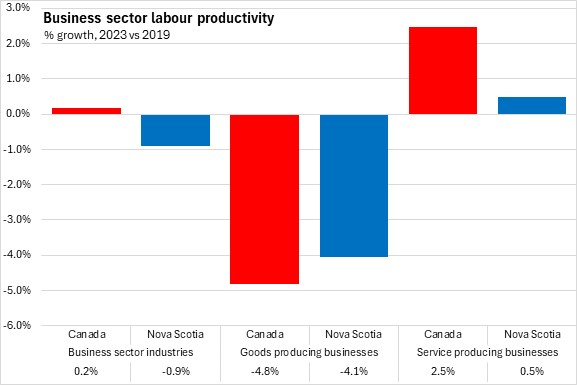
Nova Scotia's labour productivity gap relative to the national average reflects lower both goods industry productivity (66.5% of the national average) and services industry productivity (78.1% of the national average).
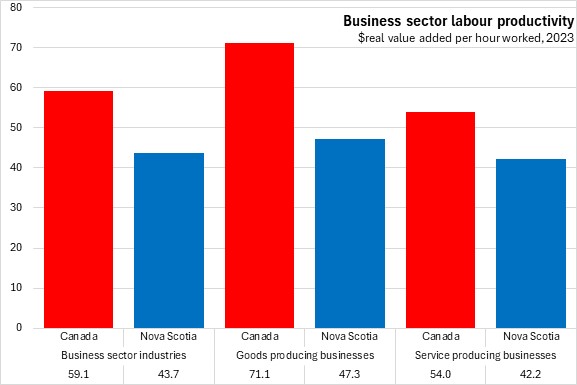
Prior to the pandemic, Nova Scotia's labour productivity had been a consistent driver of growth in real value added. After the pandemic anomalies of 2020, Nova Scotia's productivity has been declining in each year as it returns to pre-pandemic levels.
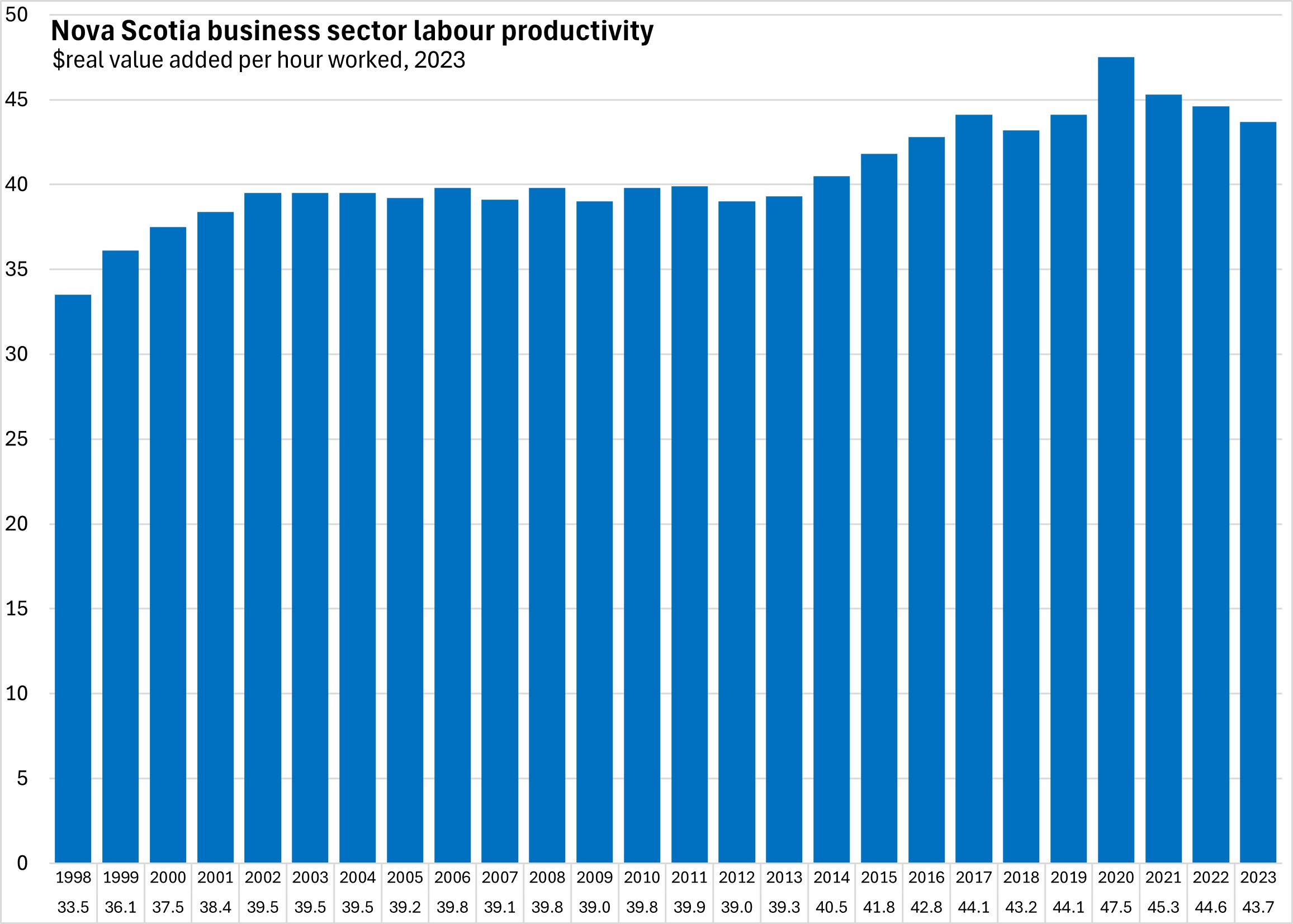
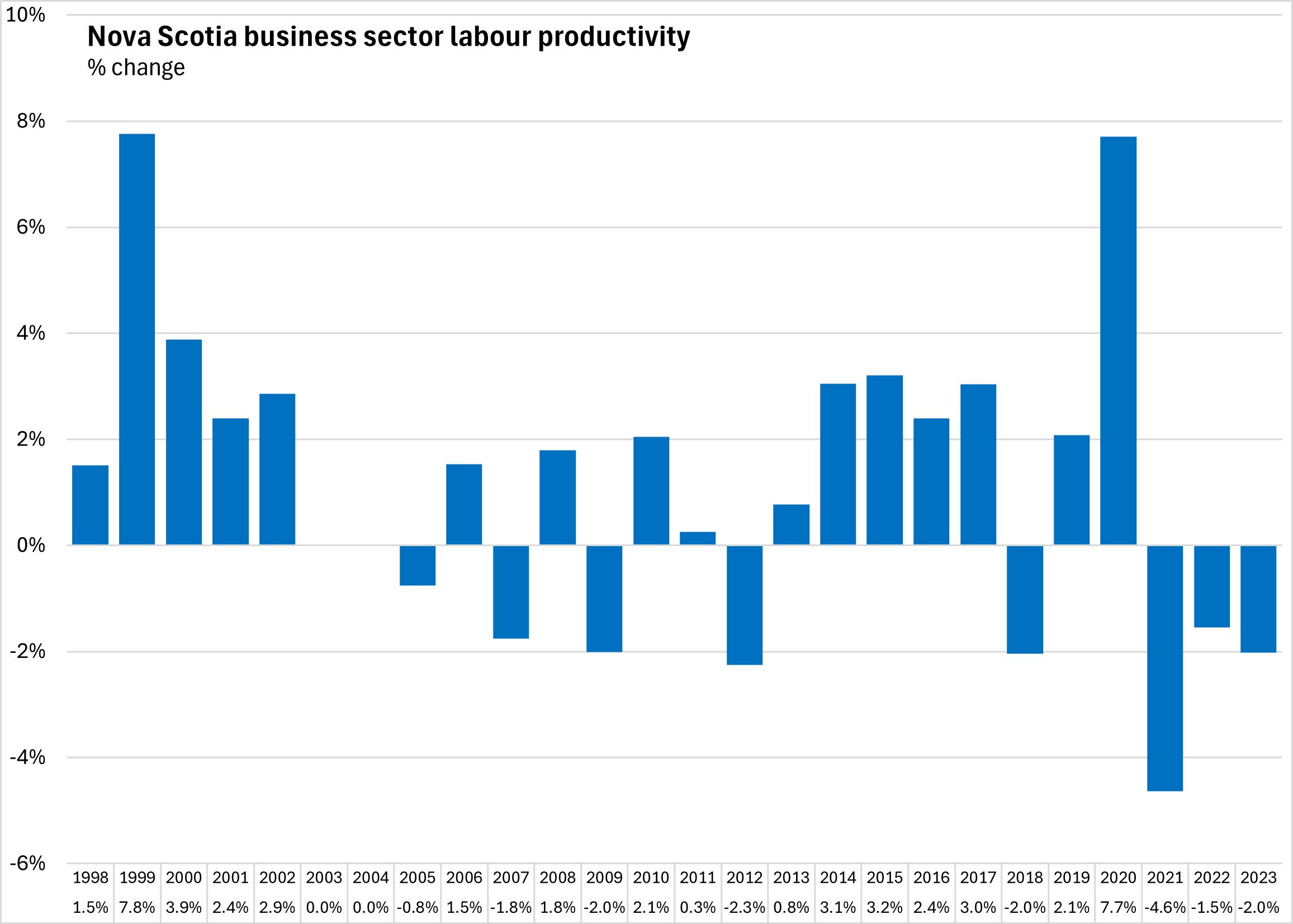
After the severe distortions in 2020, Nova Scotia's economic growth has come from the strong rebound in hours worked, offsetting the normalization in labour productivity.
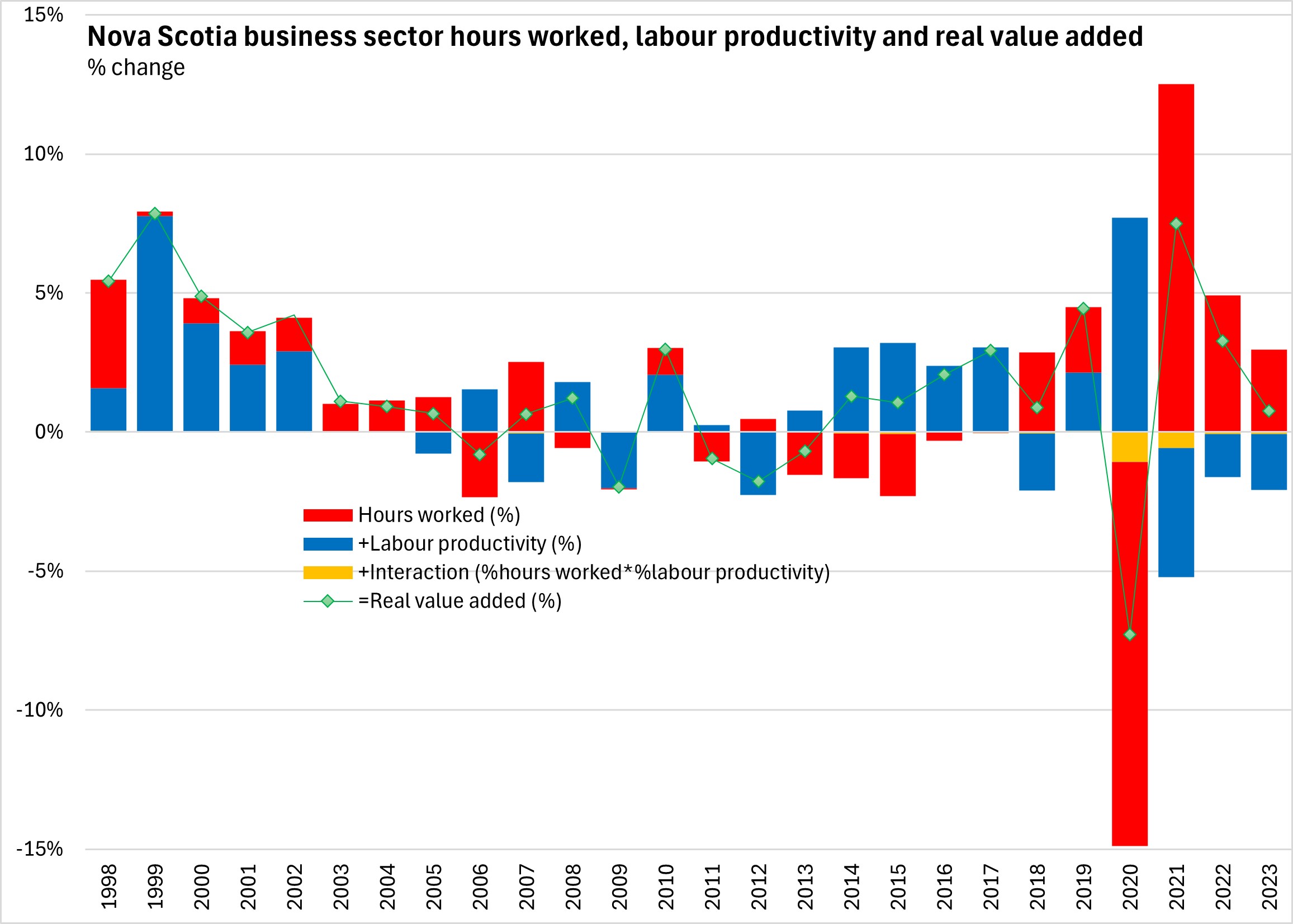
In 2023, most Nova Scotia industries reported rising hours worked and lower labour productivity. Labour productivity growth was fastest in Nova Scotia's fishing industry in 2023. Wholesale trade reported the largest productivity decline in 2023.
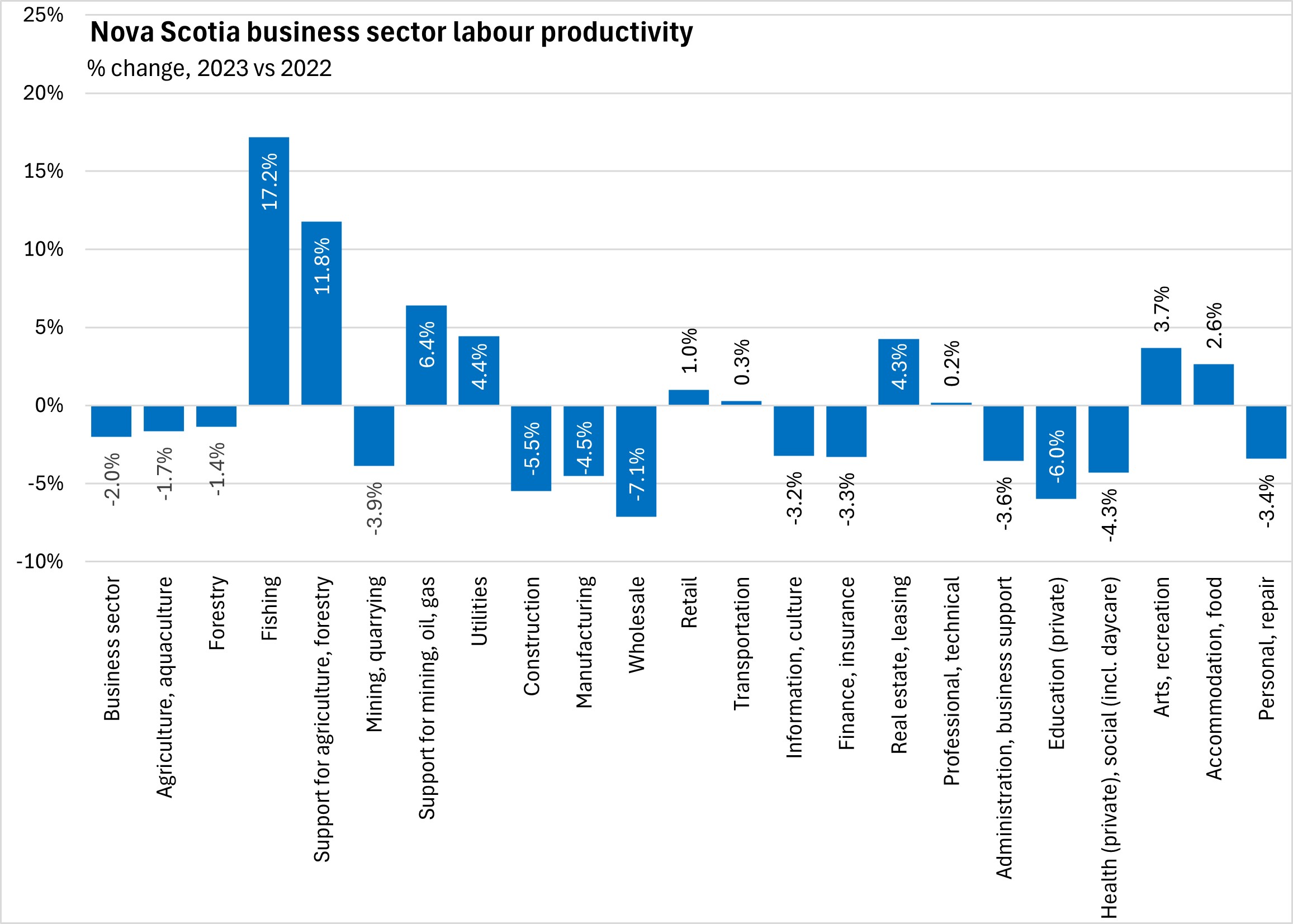
There was a notable drop in hours worked in fishing while education and health/social both reported the fastest gains in hours worked (note that these are only the business sector parts of these industries).
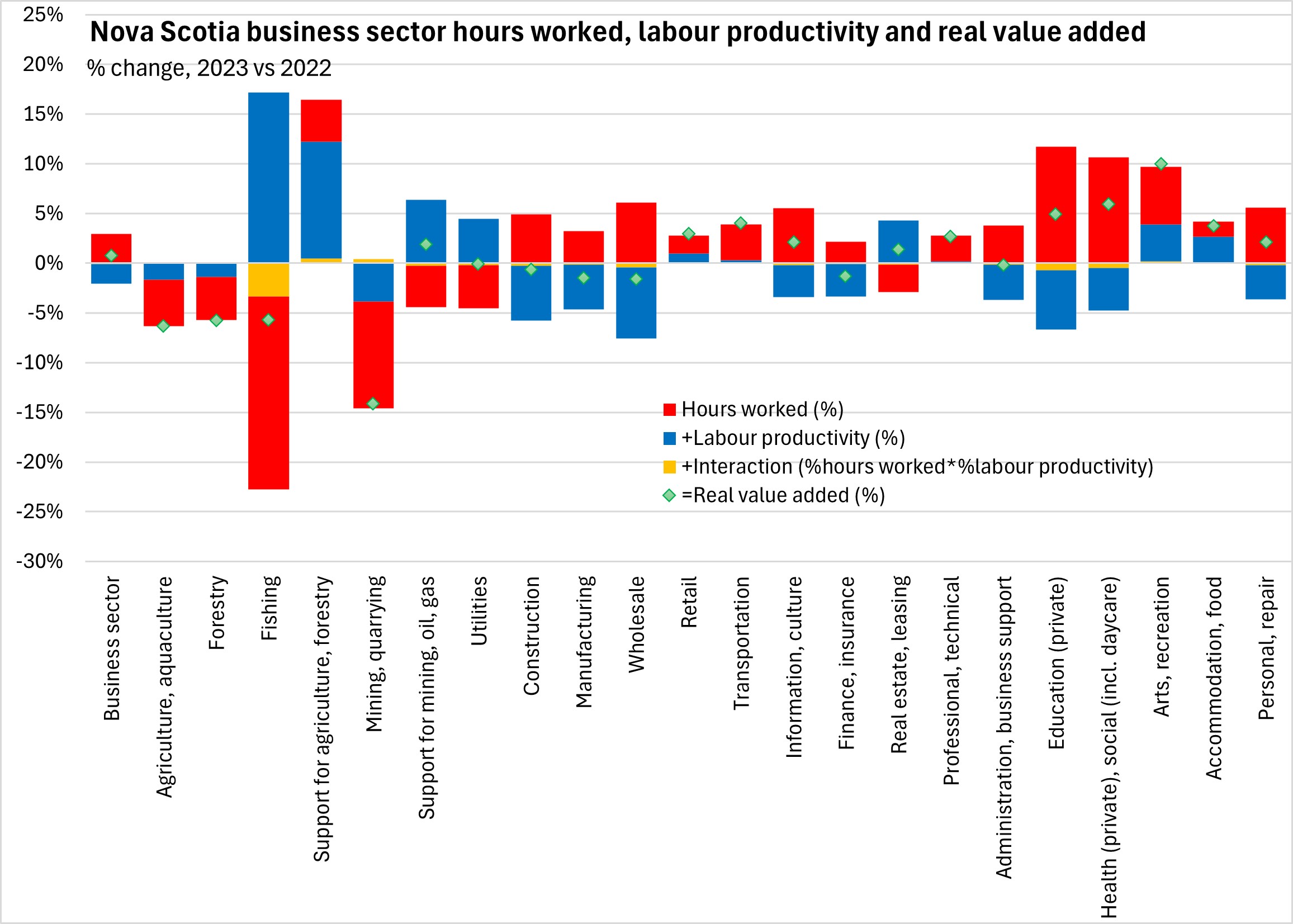
Compared to pre-pandemic productivity levels from 2019, Nova Scotia's labour productivity has declined for all sectors except fishing, support for agriculture/forestry, transportation and information/culture. The largest productivity declines were in mining, support for mining/oil/gas and education (private).
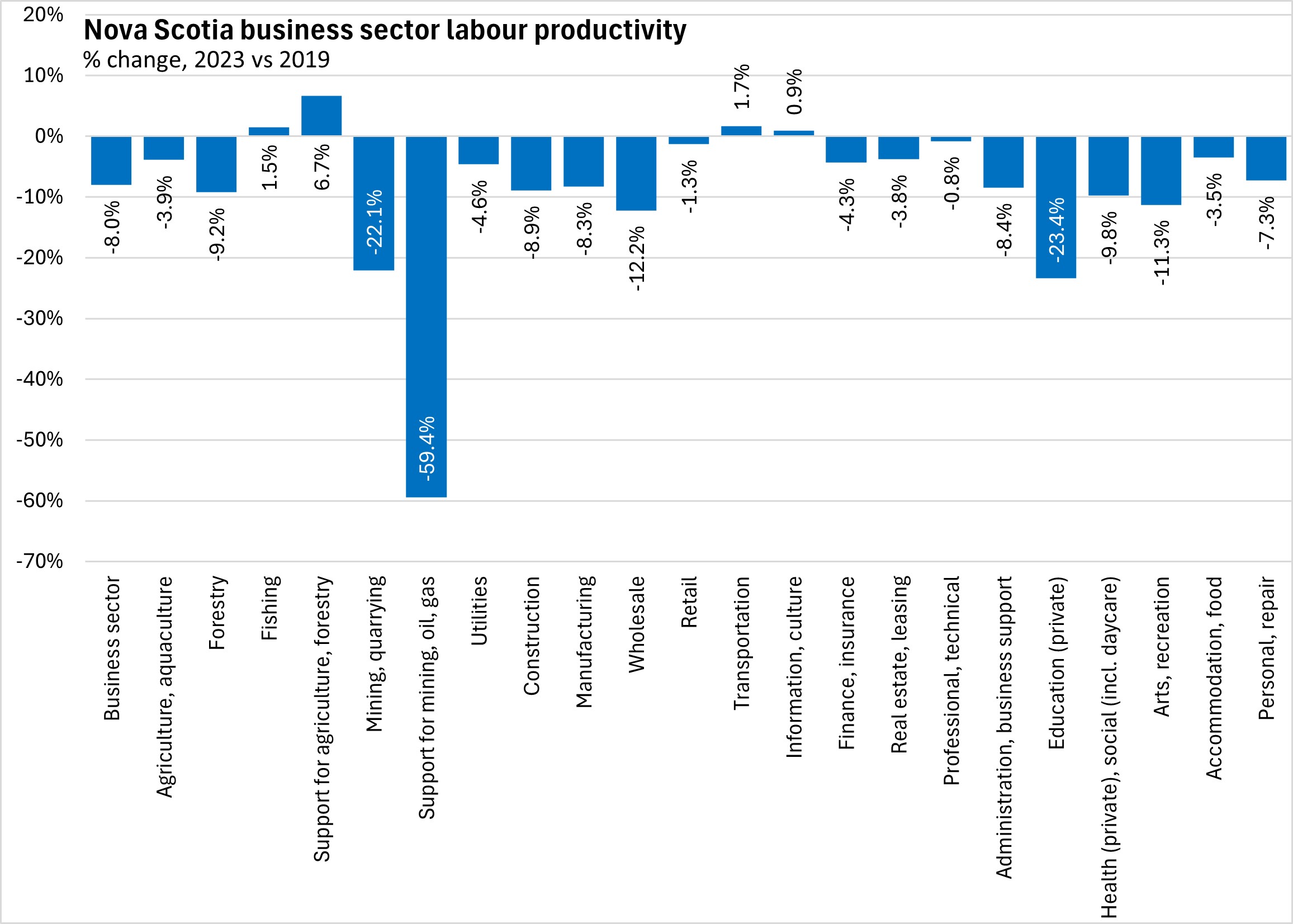
Between 2019 and 2023, hours worked grew fastest in education (private) as well as in arts/recreation. Mining reported the steepest drop in hours worked over this period.
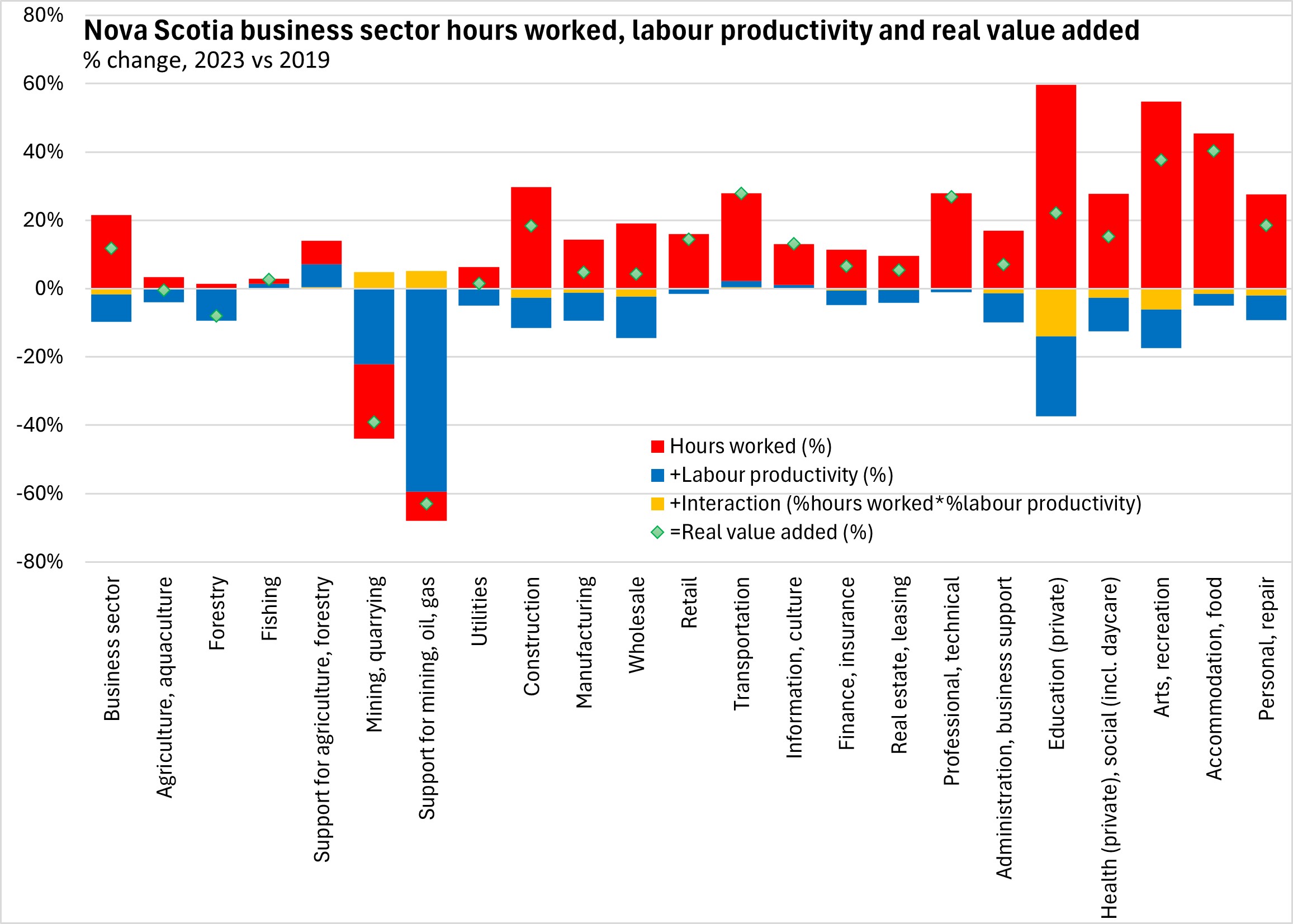
Source: Statistics Canada. Table 36-10-0480-01 Labour productivity and related measures by business sector industry and by non-commercial activity consistent with the industry accounts
<--- Return to Archive